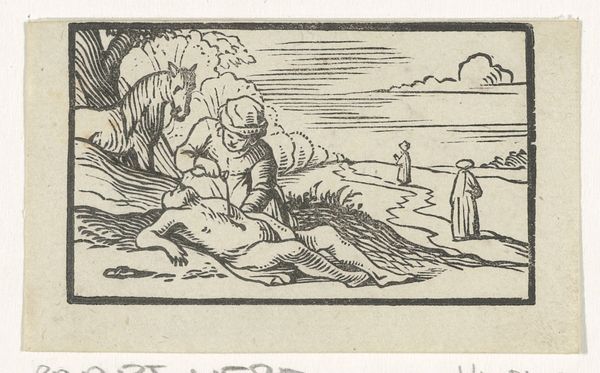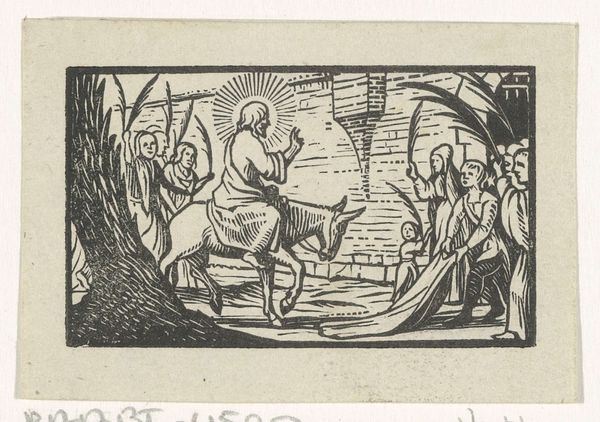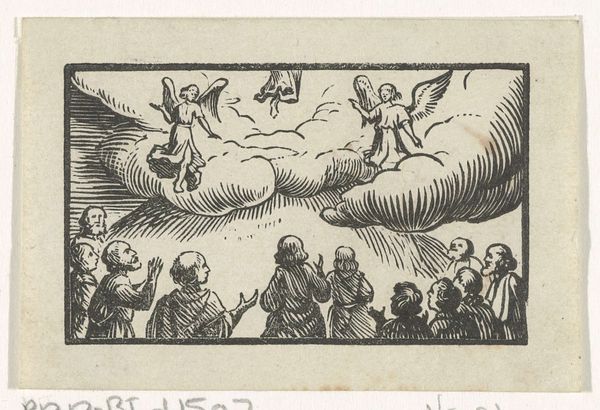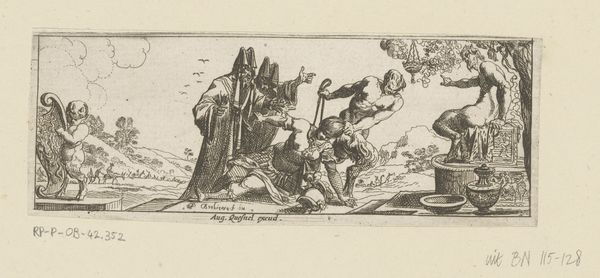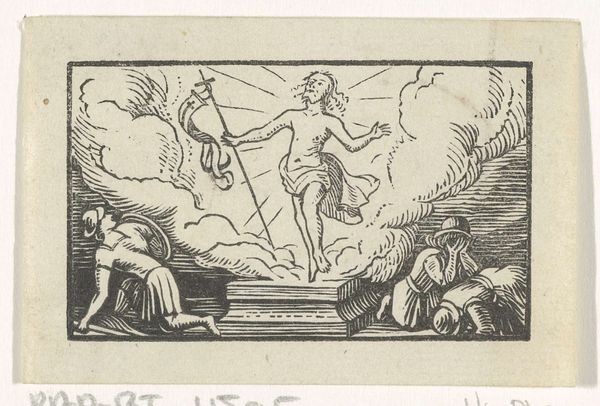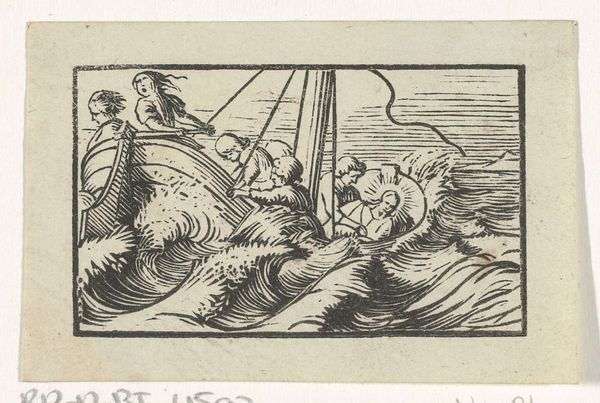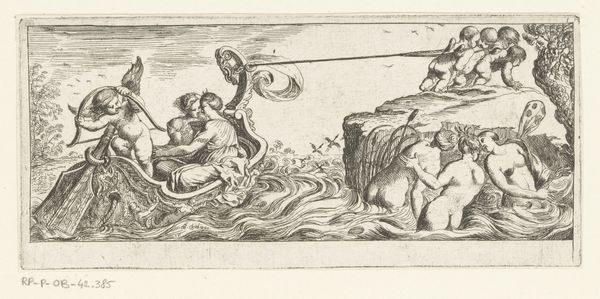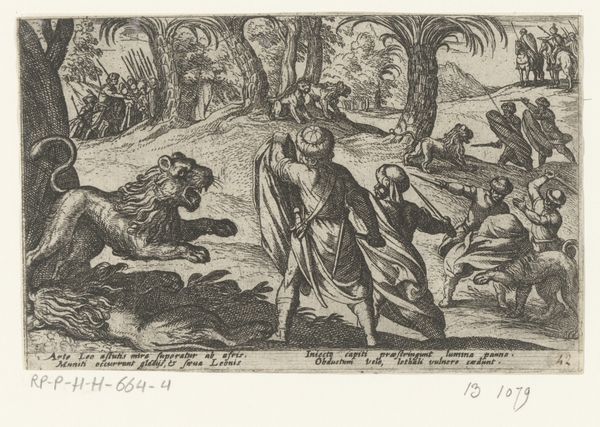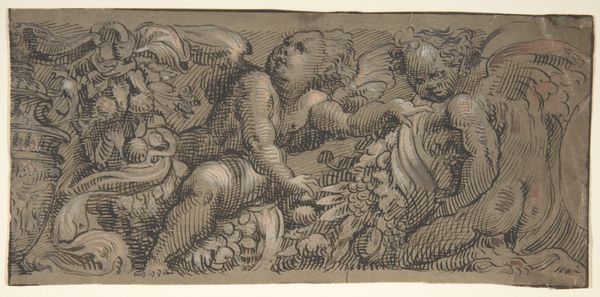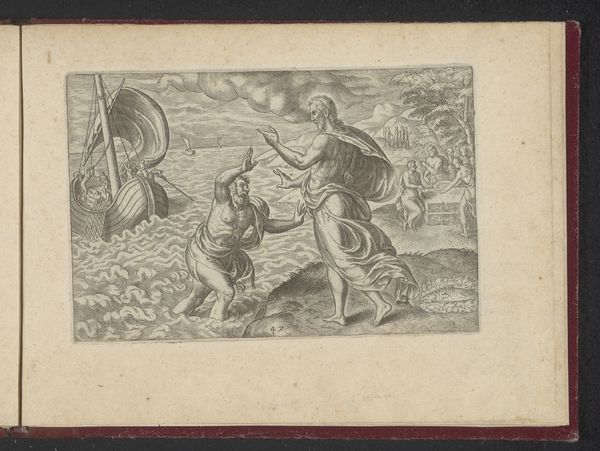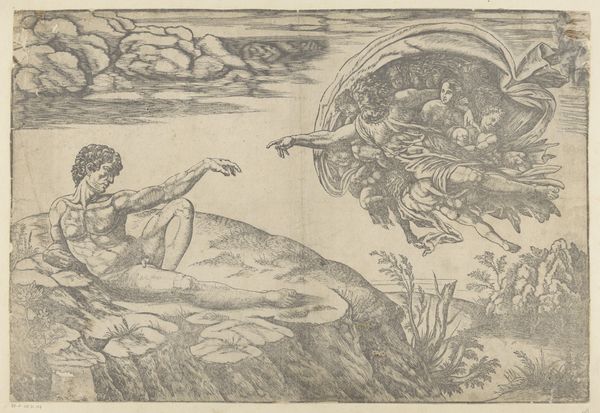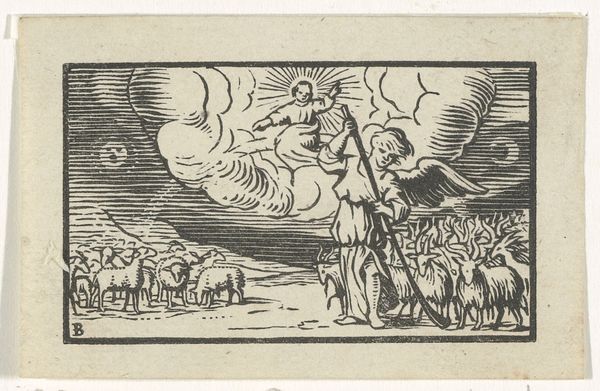
print, engraving
#
narrative-art
#
baroque
# print
#
old engraving style
#
landscape
#
figuration
#
line
#
history-painting
#
engraving
Dimensions: height 43 mm, width 65 mm
Copyright: Rijks Museum: Open Domain
Curator: Dirck de Bray created this engraving entitled "Christ in the Garden of Gethsemane," sometime between 1635 and 1694. Editor: The first thing that strikes me is the use of light and shadow. It feels like a very stark emotional landscape—black and white amplifying the scene's inherent drama. Curator: Yes, it captures a pivotal moment, doesn’t it? Note the beams of light shining down on Christ; a strong symbolic element emphasizing divine intervention, almost visualized. This evokes a familiar iconographic structure; we are led to understanding the sacred through these codified symbols. Editor: It's also interesting to observe the positioning of Christ juxtaposed with the sleeping figures. Their slumber suggests a disconnect, a failure to recognize the magnitude of the moment. It raises a fundamental question: who is allowed rest when the world faces crisis? Curator: The contrast also heightens Christ's isolation. Sleeping figures symbolize a more earthly world and detachment from divine matters, creating a sense of his vulnerability, alone to confront destiny, which heightens his status as both deity and mortal. Editor: The visual texture is heavy. The dense line work conveys both landscape elements and deeper existential unrest. I imagine many will still feel familiar to the tension displayed by such choices, especially facing such times of global consequence. Curator: Baroque art always walks this edge so interestingly. It plays with the balance of light and dark to portray not just a religious tale but to dig up emotions that sit heavy in all our consciousnesses. Editor: I am struck how such an antique scene continues to resonate with audiences today. It invites questions of faith and resilience in our troubled era. The play between stillness and an overwhelming sense of sorrowful anticipation feels palpably relevant. Curator: It’s a potent reminder that the visual languages developed long ago continue to illuminate our present. Editor: Indeed. By facing darkness, we find new means of articulating our moment, too.
Comments
No comments
Be the first to comment and join the conversation on the ultimate creative platform.
